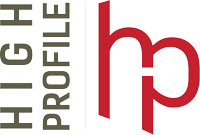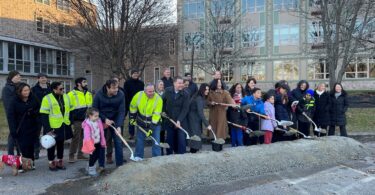by Suzanne Abbott
Completing more than 1 million sf per year in corporate interior fit-outs, Gilbane has the advantage of surveying a variety of projects with varying levels of trends and innovation. Open work space with added privacy continues to trend among larger firms. Gone are the days of staring straight at a co-worker across from you or the dreaded box cubicle of isolation. There are many new options for defining these open spaces, with custom erase boards, mobile presentation screens, and storage walls. Firms want employees to be more collaborative while having the option to work privately, as well as the ability to change the function of spaces to adapt to future changes.
Flexibility in workplace design and convertible spaces are a focus. Furniture vendors are offering modular furniture pieces that can be moved easily to reconfigure space. Examples include multipurpose furniture including file cabinets that are mobile and serve as seating, swivel chairs, convertible ergonomic desks, etc.
Along with the theme of flexibility and convertible work space, there is an emphasis on collaborative work spaces. Having seen many reputable studies where face-to-face interaction among employees is the most productive, designers are creating spaces that encourage instances of chance encounters and unplanned interactions. Office trends include restaurant-style social and working spaces, including lounge areas with comfortable seating for collaborative sessions, and hub break-out spaces for team meetings. Offering employees the ability to move throughout office spaces during the day and choose how and where they work is vital.
Designers are incorporating hoteling and bench desk configurations that are not designated for a designated employee, therefore offering the opportunity for more social interactions, as well as mobility to relocate to different working spaces. Additionally, this results in decreased footprint and more efficient utilization of real estate.
To improve employee retention, a focus on wellness, employee satisfaction, and building community through fun, recreational space is a priority. The inclusion of slides, play areas, and sports activities in nontraditional designs increases employee productivity, satisfaction, and retention and supports recruitment. Another trend making a comeback is the integration of full-service kitchens. More firms are opting to include installation of large kitchens to encourage employees to cook or bring their lunches and eat in the common kitchen area.
Workplace comfort is a huge driver in employee efficiency with a health, wellness, and ergonomic trend to offer break/relaxation space within the office. These include wellness rooms such as meditation or napping rooms, in addition to private mothers’ rooms. Designers and furniture vendors are offering chairs that recline and pod spaces for added comfort while sitting at desks or at the computer.
Interesting custom-branded spaces are widespread in new corporate interior designs. Firms are incorporating branding elements and messaging into their office space to create emotional connections with their employees and visitors. Newmark Grubb Knight Frank’s new office space, as designed by Boston Architect Visnick & Caulfield, is a relevant example of the brand integration. Utilizing the design of their space to align with their mission and purpose as an organization, visitors are visually captured through use of color and messaging in lobbies, conference rooms, artwork, and accent walls. A series of values, images, attributes, and narratives create a sense of the Newmark Grubb Knight Frank brand.
Trends today are centered on nurturing employees, the spaces that they work in, and innovative ways to promote strategic business initiatives. Corporate interiors play a much larger role in employee satisfaction, engagement, and retention, and the spaces we design and build need to address these factors.
Suzanne Abbott is business development manager for Boston Interiors, Gilbane Building Company.











